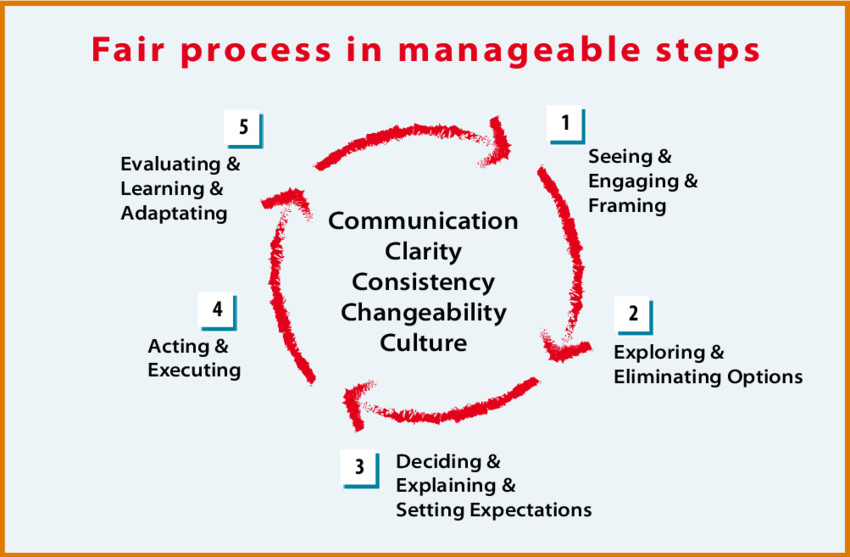
Research has known for a while that when someone in your presence is trying to think, much of what you are hearing and seeing is your effect on them. Some type of a mirror image effect is taking place.
Or more to the point: The quality of a person’s attention determines the quality of other people’s thinking.
But high quality of attention is but the start because asking questions that – merely by being asked – remove people’s assumptions, of which they often were unaware, is another key ingredient.
In other words: under the right conditions and circumstances, people will – invariably – think for themselves.
In highly driven business environment, getting people to think is both, desired and feared.
It is feared – often – in subordinates. Most managers still prefer people to do as they’re told.
And it is desired – at least in theory – in top executives.
The paradox interestingly is: a (business) culture that undermines the thinking process in the lower ranks, only succeeds in creating leaders that are unable – or unwilling – to truly think for themselves. They will think, no doubt, but by and large, end up regurgitating the insights they were handed down and made to act upon when they started out in their careers.
There is of course a rationale to that.
People, business people, that truly think for themselves, are often inconvenient. They do not quite tick the same way as the rest of the herd. They make a different set of assumptions, while discarding other givens as hubris. They often function truly out of the box, if not to say out of line.
In the best case they are perceived as innovators, mavericks. But more likely rather as an inconvenience that disturbs the in-house freedom and ‘business as usual’.
A non-desired, and non-desirable, influence.
Yet – time to think is critical if we’re genuine about creating change, innovating, or even competing without just imitating others.
And what holds true for high-flying executives, does even more so when it comes to boards. In particular the chair of the board, whose role it is to bring out the best of each board member for the complicated discussions at hand. And to facilitate a discussion that truly shines a light from all possible – and even at first thought considered impossible – angles onto the decisions to be taken.

Those familiar with the Fair Process Leadership Model, will be aware that Phase 1 (Seeing & Engaging & Framing) and Phase 2 (Exploring & Eliminating Options) assume the intake and uptake of a very diverse set of insights, information, experiences and opinions.
What it does not mentioned, is How to get to that diversity and depth of contribution.
And this is precisely where deep thinking, the time for it, and ideally a thinking partner with extraordinary listening skills, is of importance. For boards, the first and most important thinking facilitator is no doubt the chair, and it is his or her responsibility to create an environment conducive to deep thinking.
The following are the Ten Components of a Thinking Environment (Source):
- Attention: Listening with palpable respect, interest, and fascination, and without interruption.
- Equality: Treating each other as thinking peers
-> Giving equal turns and attention.
-> Keeping agreements and boundaries. - Ease: Offering freedom from internal rush or urgency.
- Appreciation: Practising five-to-one ration of appreciation to challenge.
- Encouragement: giving courage to go to the cutting edge of ideas by moving beyond internal competition
- Feelings: Allowing sufficient emotional release to restore thinking.
- Information: supplying the facts; recognising social context; dismantling denial.
- Difference: welcoming diverse group identities and diversity of thinking
- Questions to Grow: removing untrue assumptions that limit our ability to think for ourselves well
- Place: Creating a physical environment that says back to people: “you matter”.
Further learning:
- Title: ‘Time to Think: Listening to ignite the human mind’
- Author: Nancy Kline
- ISBN: 0-7063-7745-1
Acknowledgement
Only a few days ago, Ryan Gellert was pronounced the new CEO of Patagonia, replacing after what turned out to be a surprisingly short search period, Rose Marcario.
On a personal level I am not particularly interested in any CEO successions – maybe with exception of the governance process behind it. After all, one person out, one person it. What difference does it make, even in the case of a company like Patagonia, whose fate is determined by the wishes and views of its founder (only!).
But this particular case is different.
I have been wondering for some time why and how Ryan managed to build the successful team, the uniquely and positively charged ambience I personally saw when at Patagonia’s European headquarters in Amsterdam. What made the difference in his leadership approach and style?
The answer came only after I had left the outdoor sector:
Rarely, if ever, had I met a person so genuinely interested in working with people and seeing them be successful. Just working to see how collaboratively the code of getting more done together than individually could get cracked. Who, in addition to evident business deliverables, wanted to give every person in his team the opportunity to grow, and to get involved in a cause that matters to them above and beyond their assigned roles. Who gave them his time to listen to their views and experiences. And who took time to reflect on what he had heard and learned, and go all-in for what he thought would support his people best in achieving needed and desired outcomes.
Ryan I think, may have been the first person in my professional career, or even personal life, who managed to create what a successful ‘Thinking Environment’ might look like.
It is for this reason I am grateful to Ryan for having had the opportunity – even if briefly, and already some time ago – to collaborate.

